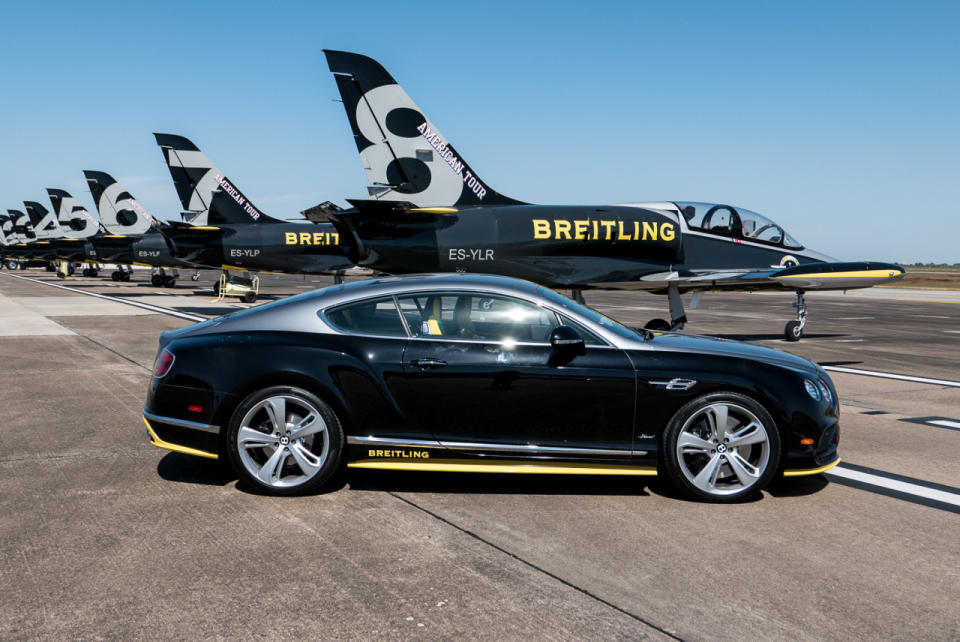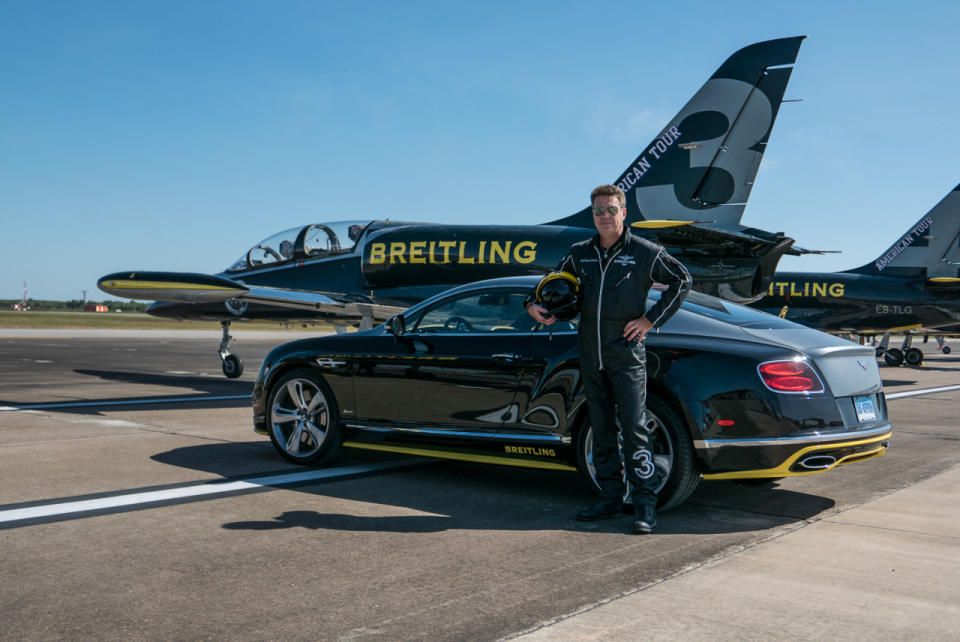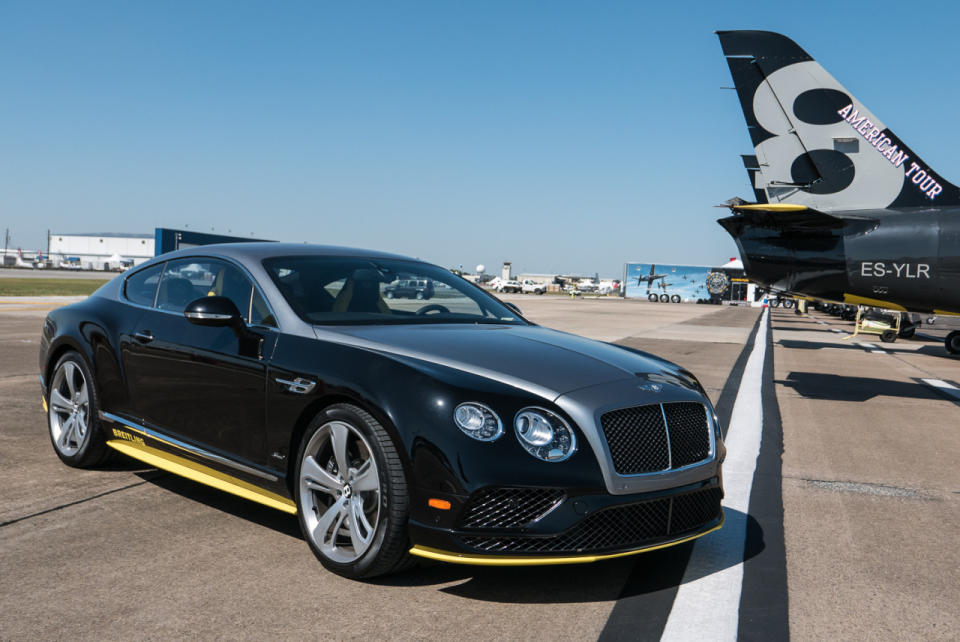Flying High, And Upside Down, With The Breitling Jet Team
The man they call Douky is humming along happily right after he’s checked on me for the second time since we took off. “You ok, Abby?” he says into his microphone a smile in his voice. I’m sitting second seat of an L-39C Albatros, a Czech training jet designed in the late ‘60s, and trying not to accidentally touch anything in the cockpit while simultaneously remembering to breathe and tighten my stomach muscles to keep from passing out.
This small maneuverable jet can do upwards of 450 miles an hour and put pilots (and their planes) under 7 to 8Gs of longitudinal force. Today, Douky informs me, we’ll only pull four-and-a-half Gs, and our flight will last a little over half an hour. These are facts that I’d known before I arrived thanks to a little bit of digging, and they’d kept me up worrying the night before, hoping that I wouldn’t pass out or puke my guts out trying to fly with the Breitling Jet Team.
“Hmm, it’s a bit windy up here today.” Douky announces into my helmet. The eight jets—the world’s largest team of civilian aerobatic flyers—space slightly further apart as we head out over Galveston Bay. I’m close enough to wave to the other passengers across the formation and see them smile and give thumbs up as we fly alongside. In the freshening breeze at 5,000 feet above the earth the small jets jounce and twitch. Periodically, I hear the pilots talk to one another in quick snippets of French but 90 percent of the time they are flying along looking at each other out the sides of the their cockpits.

I’m lucky enough to be riding shotgun with Christophe Deketaelare, nicknamed “Douky” for short, who flies the number 3 jet. Our spot takes up what Douky informs me is the best seat in the house for the maneuvers we are going to do—he flies what’s known as First Slot and it essentially puts us smack in the middle of the formation, directly behind the leader—the number one plane– piloted by Jacques “Speedy” Bothelin.
“Here we go, in three, two, one.” Douky counts down, his voice echoing inside my helmet. The next thing I know, despite the stupid grin on my face, my cheeks are pulled downward and the ground is tearing away behind me. Being in a training aircraft means that I am sitting in my own personal cockpit with a full suite of controls all within reach of my feet and hands. The stick periodically tilts between my legs as Douky keeps us within spitting distance of the six other black and yellow jets in the midst of a giant loop over Galveston Bay. I’ve been briefed—don’t touch anything red and keep your hands on your harness. At the top of the loop, around 10,000 feet above the ground, the pressure lifts and I can breathe again. I’ve felt lateral Gs before in race cars on a track, but vertical Gs are an entirely new experience. The acceleration of the jet forces blood from your head towards your feet, which, in some cases can cause black outs. According to Douky there’s really no way to train for it, you just eventually get used to it after awhile.
As the blood rushes back to my head, my hands start to tingle like they’re going to sleep. Douky’s voice snaps me back from worrying whether or not the team of pilots is going to have to carry me out of the cockpit in a heap. “Ok, next is the barrel roll,” he says. I keep my eyes up on and on the horizon to stave off motion sickness, the way I learned while sailing with my dad. My body is pushed hard into the ejection seat I’m strapped into in a five-point harness. Before we left the ground the engineer strapping me in asked me to count the number of pins he pulled out of the seat, arming it in case we have to bail at the last minute.

Luckily for me, the team has only had to eject once. In 2012, the number two jet suffered engine problems on a repositioning flight between the Netherlands and Belgium. Both the pilot, Bernard Charbonnel, who is flying the number two jet today, and his engineer successfully ejected and the plane crashed into an empty field. On this flight, there’s very little drama in the air as we level out and head for the horizon again. Douky checks in to make sure I’m still conscious and asks me how I feel.
Despite the fact that the air vents in my cockpit are open full blast, I’m suddenly incredibly hot and my breathing shallows. I tell Douky this and he tells me that after one final maneuver—an airbrake—we’ll be back on the ground. My slightly foggy brain hopes that it’s sooner rather than later and I roll up the sleeves of my flight suit. We cruise along for a few minutes in a straight and thankfully level line, and I hear Douky singing again. By this point I’ve come to the conclusion that he sings when we’re about to go into a maneuver. I’m sure it’s based on psychological trick that gets the passenger thinking about something else as their body is put under strain. Luckily for me his tune works as the planes around me break away in quick succession, smoke trailing out behind them. The next thing I know, it’s our turn and we’re heading straight back up into the blue. It’s the most giggle-inducing, tunnel-vision-y experience I’ve ever had and despite the slight feeling of swimming in the atmosphere, I’m loving every minute of it.


 Yahoo Autos
Yahoo Autos 